Your rose is successfully potted in its new container, and it’s starting to feel like home. The initial planting is a crucial first step, but the journey to beautiful, continuous blooms lies in consistent, thoughtful care. Maintaining an indoor rose is a rewarding routine that connects you with the plant’s daily needs. It’s an ongoing conversation where the plant tells you what it requires, and you provide it. This guide will be your translator, helping you understand the language of your rose.
Mastering the art of indoor rose care means becoming the guardian of its environment. You’ll learn to be a sun-provider, a rain-maker, and a personal chef for your plant. We will explore the five pillars of rose maintenance: Light, Water, Environment (Humidity & Airflow), Food, and Grooming (Pruning). Understanding these elements will empower you to not only keep your rose alive but to help it thrive, producing a cascade of stunning flowers that will brighten your home year-round.
The Light Equation: Fueling Your Rose for Success
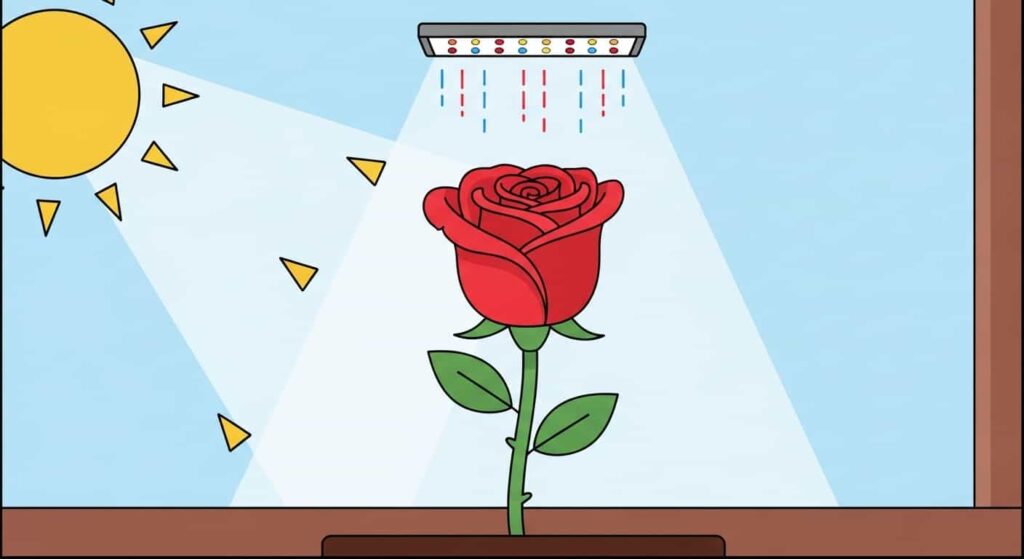
Light is the single most critical factor for a healthy indoor rose. It is the fuel a plant uses for photosynthesis—the process of converting light into the energy needed for growth, foliage production, and flowering. Without adequate light, your rose will be weak, spindly, and will produce few, if any, blooms.
Understanding a Rose’s Light Appetite

Roses are sun-worshippers. In an outdoor garden, they demand at least six to eight hours of direct, unfiltered sunlight per day. Replicating this indoors is the primary challenge. A spot that seems bright to the human eye is often far from sufficient for a sun-loving plant.
The best natural light source in a home is an unobstructed, south-facing window. This exposure provides the most intense and longest-lasting light throughout the day. East-facing windows offer gentle morning sun, while west-facing windows provide strong afternoon sun. A north-facing window will not provide enough light for a rose to survive, let alone thrive.
Even with a south-facing window, factors like weather, season (shorter days in winter), window tinting, screens, or outdoor obstructions like trees and buildings can significantly reduce the available light. For this reason, relying solely on natural light is often a gamble.
The Game-Changer: Supplemental Grow Lights
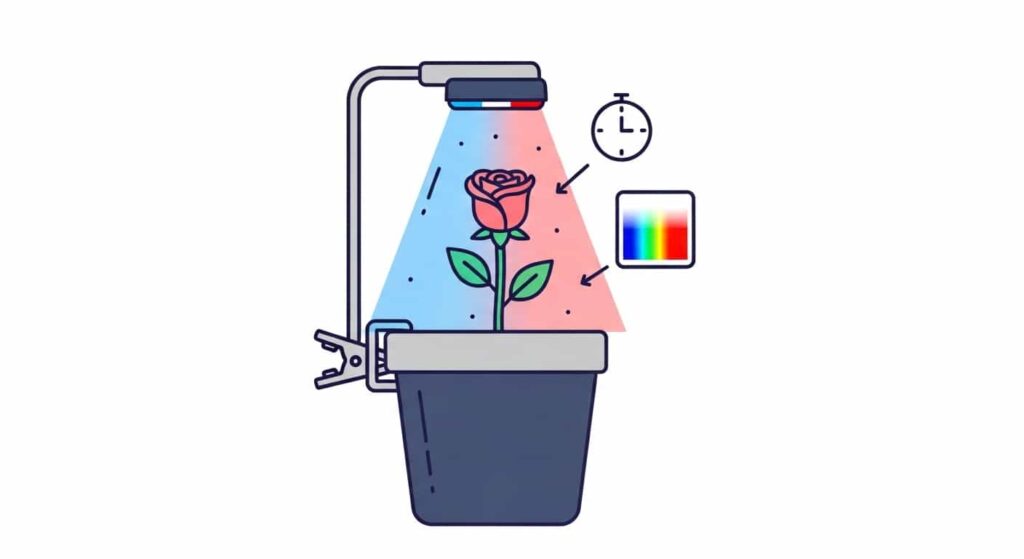
For consistent success, especially for beginners, a full-spectrum LED grow light is a non-negotiable tool. This technology is the great equalizer in indoor gardening, guaranteeing your rose gets the perfect amount and quality of light every single day, regardless of your home’s orientation or the weather outside.
- What Kind to Buy: Look for a full-spectrum or broad-spectrum LED light. These are designed to mimic the sun’s rays, providing the necessary wavelengths for both vegetative growth (blue light) and flowering (red light). They come in many forms: single bulbs that screw into standard desk lamps, clip-on fixtures with adjustable arms, or larger hanging panels. A simple clip-on light is often perfect for one or two plants.
- How to Use It: Position the light directly above the plant, about 12 to 18 inches from the top leaves. As the plant grows, you may need to adjust the height. Use a simple electrical timer to automate the process, setting the light to be on for 14 to 16 hours per day. This consistent “day” length encourages vigorous growth and prolific blooming. Remember to give your plant a “night” too—roses need a period of darkness for respiration, so don’t leave the light on 24/7.
- Don’t Forget to Rotate: Whether using a window or a grow light, rotate your plant a quarter turn every few days to ensure even growth. This ensures all sides of the plant receive equal light, promoting even, bushy growth instead of a lopsided plant leaning in one direction.
The Art of Watering: A Delicate Balance
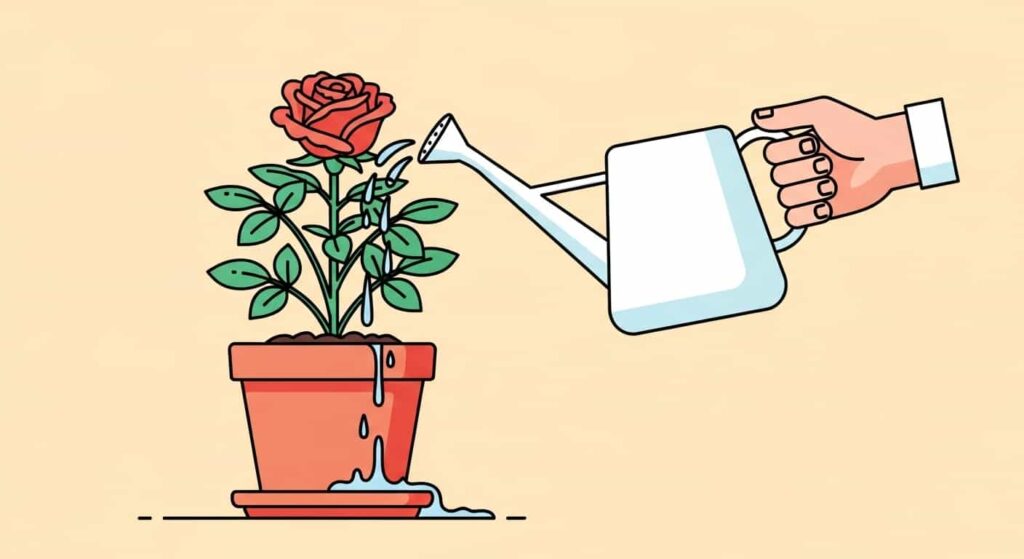
Watering is the area where most new indoor gardeners make mistakes. The goal is to keep the soil consistently moist but never waterlogged. Overwatering is far more dangerous than underwatering, as it leads to root rot, which is often irreversible.
How to Know When to Water
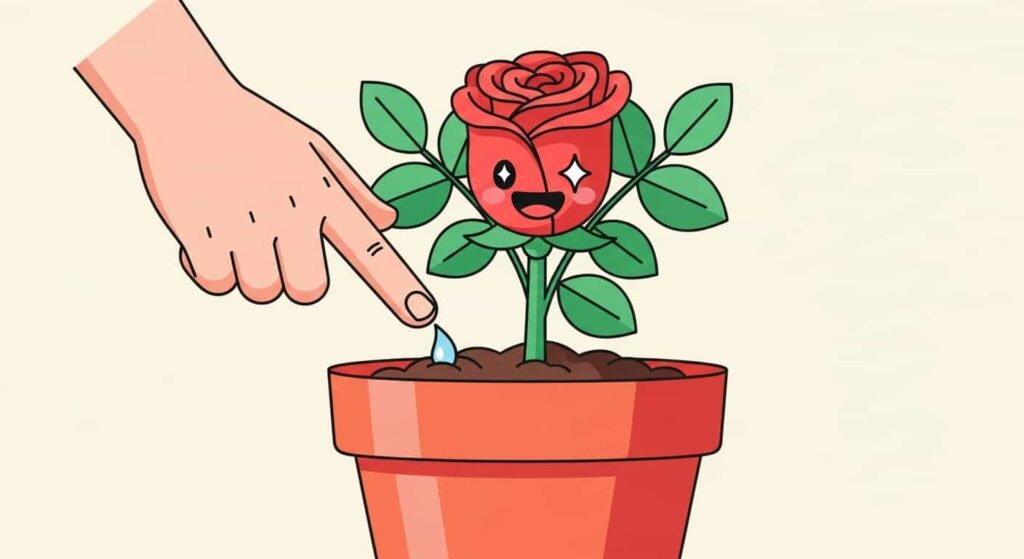
Ditch the rigid schedule. Watering “once a week” is not a reliable method, as the plant’s needs change based on temperature, humidity, light, and its growth stage. The only sure way to know if your rose needs water is to check the soil. Insert your finger about one inch deep into the potting mix.
- If the soil feels dry at that depth, it’s time to water.
- If it feels moist, wait another day or two and check again.
Over time, you can also learn the weight of your potted plant. A freshly watered pot will be noticeably heavier than a dry one.
The Correct Watering Technique

When it’s time to water, do it thoroughly.
- Using a watering can with a long spout, pour water slowly and evenly over the entire soil surface. Avoid splashing water on the leaves, as this can promote fungal diseases.
- Continue watering until you see water flowing freely from the drainage holes at the bottom of the pot. This ensures the entire root ball is saturated.
- Allow the pot to drain in the sink or its saucer for about 15-20 minutes.
- Crucially, empty the saucer. Never let the pot sit in a pool of standing water. This is the primary cause of root rot.
Managing the Environment: Humidity and Airflow

Your home’s atmosphere is very different from a garden. Indoor environments, particularly with heating or air conditioning, are often very dry and have stagnant air—two conditions that roses dislike.
Boosting Humidity
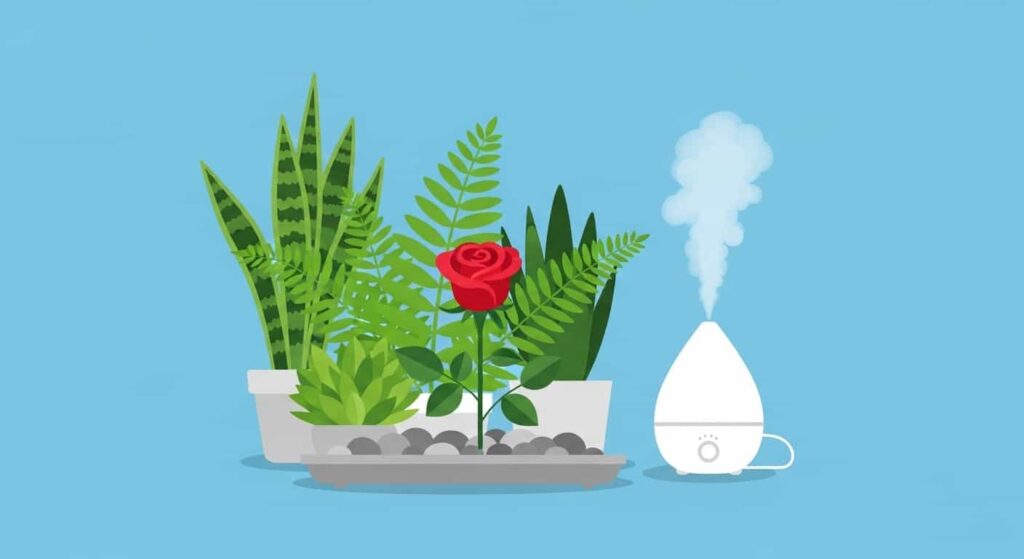
Roses prefer a humidity level of about 40-50%. The average home can be as low as 10-20%, which stresses the plant and creates a prime environment for pests like spider mites. You can easily create a more humid microclimate around your rose:
- Use a Pebble Tray: Place a layer of pebbles in the pot’s saucer. Fill the saucer with water to just below the top of the pebbles. Set the pot on top. The pot sits on the dry stones, not in the water, and the evaporation creates a pocket of humidity around the plant.
- Group Plants Together: Plants release moisture through their leaves via transpiration. Grouping your rose with other houseplants creates a naturally more humid zone.
- Use a Humidifier: A small room humidifier placed near your plants is a highly effective way to raise the ambient humidity.
The Importance of Air Circulation
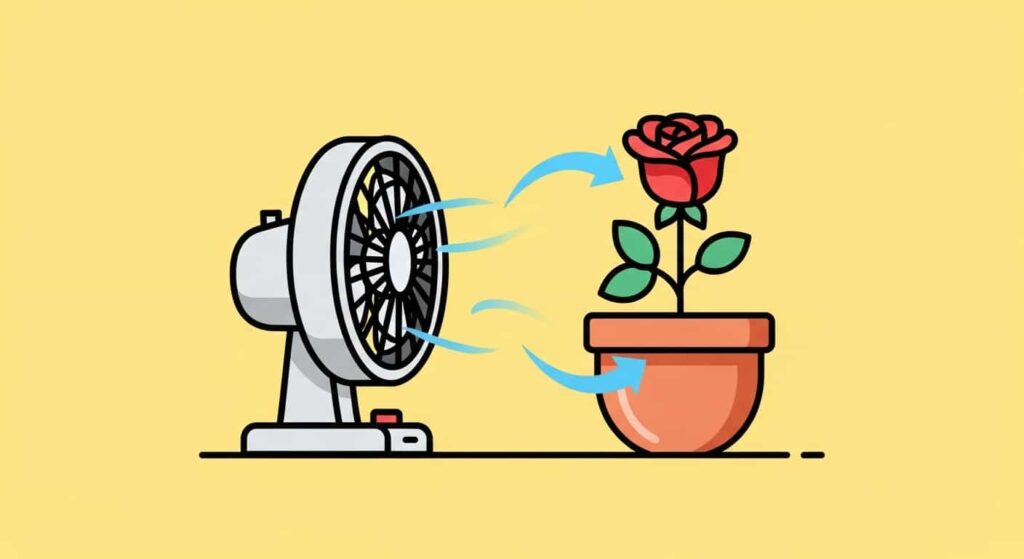
Good airflow is essential for preventing fungal diseases like powdery mildew. In the stagnant air of a home, moisture can sit on leaves, creating a breeding ground for fungus. A gentle breeze helps keep the foliage dry. You can improve air circulation by:
- Ensure there is some space between your plants.
- Using a small, oscillating fan set on low for a few hours each day. Don’t point it directly at the rose, but aim it nearby to create gentle air movement in the room.
A Recipe for Blooms: The Fertilizing Routine
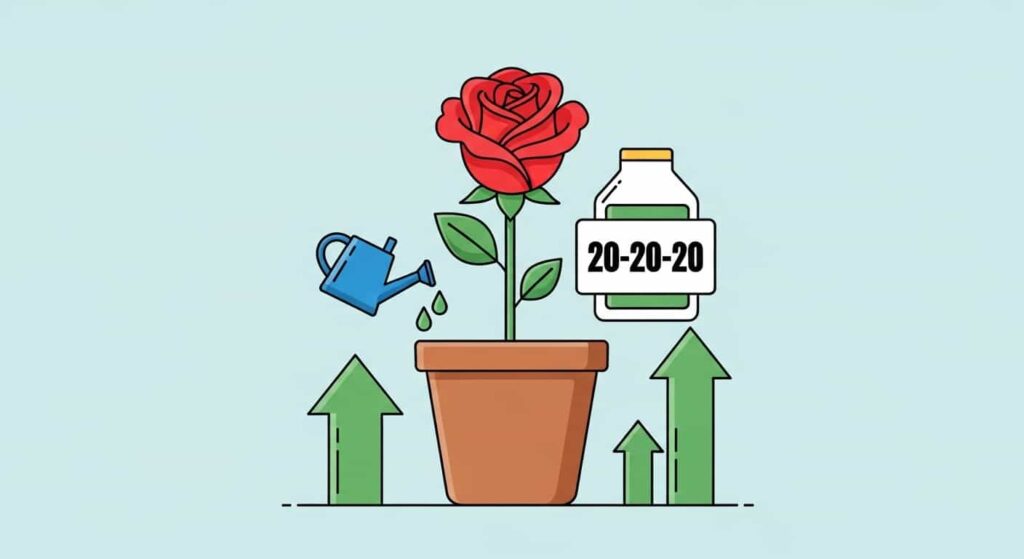
A potted rose is in a closed system with a finite amount of nutrients. A balanced formula (e.g., 20-20-20) works well. To fuel the incredible energy required to produce flowers, you must provide a regular supply of food.
What, When, and How to Fertilize
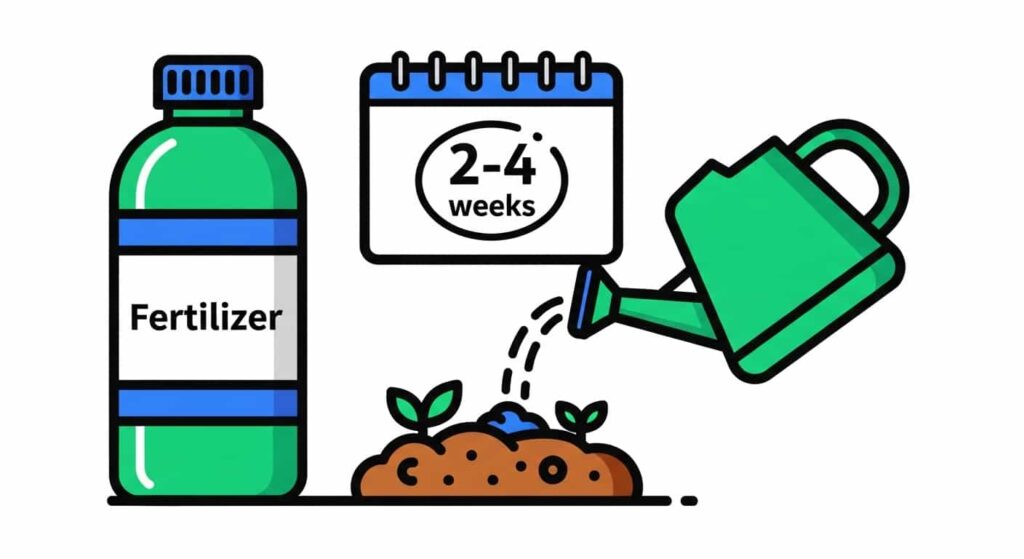
- What to Use: Choose a high-quality, water-soluble fertilizer formulated for roses or flowering plants.
- When to Fertilize: Feed your rose regularly during its active growing season (spring and summer). A good rule of thumb is to fertilize every 2 to 4 weeks.
- How to Apply: Always follow the package directions for dilution. A common mistake is to mix the fertilizer too strongly, which can burn the plant’s roots. Mix the fertilizer in your watering can and apply it to already moist soil. Fertilizing a bone-dry plant can also shock the roots. Water the plant with plain water first, then apply the fertilizer solution.
- Winter Rest: In the fall and winter, the plant’s growth will naturally slow. Reduce fertilizing to once a month or stop entirely to allow the plant a period of rest. Resume your regular schedule in the spring when you see new growth emerge.
Grooming for Health: Pruning and Deadheading
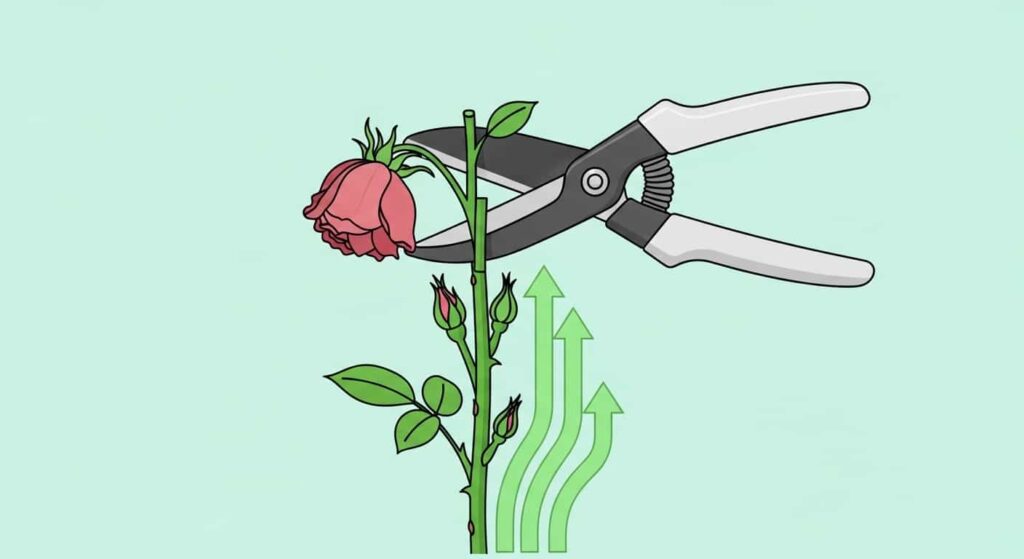
Pruning is not about hurting the plant; it’s about shaping its future and promoting its health. Using a clean, sharp pair of bypass pruners, you can direct the plant’s energy and maintain its vigor.
The Art of Deadheading
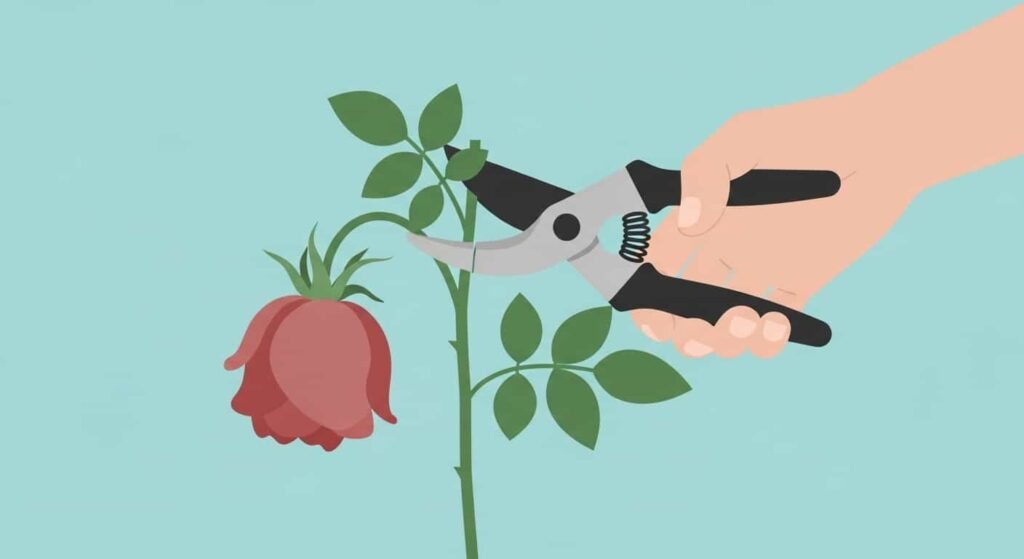
“Deadheading” is the simple act of removing spent flowers. Once a bloom begins to fade, wilt, or drop its petals, it’s time to snip it off. If left on the plant, the flower will start to form a seed pod (a rose hip), which consumes a massive amount of the plant’s energy. By removing the old flower, you signal to the rose to redirect that energy into making new leaves and, most importantly, new flower buds.
How to Deadhead: Follow the stem of the faded bloom down to the first leaf set that has five leaflets. Make a clean cut at a 45-degree angle just above that leaf set. A new, flowering shoot will often grow from this point.
Maintenance Pruning

Beyond deadheading, occasional pruning helps maintain the plant’s shape and health.
- Remove Unhealthy Growth: At any time of year, you can prune off any branches that are dead (brown and dry), weak, or spindly.
- Open Up the Center: If the plant becomes very dense, selectively remove a few branches from the center of the bush. This improves air circulation, which helps prevent disease.
- Shape the Plant: Don’t be afraid to trim branches to maintain a pleasing, compact shape.
A more significant “hard prune” can be done once a year in late winter or early spring to rejuvenate the plant, but for routine indoor care, focusing on deadheading and light shaping is sufficient.
By mastering these five areas of maintenance, you become a responsive and effective plant parent. You’ll learn to read your rose’s cues—the color of its leaves, the posture of its stems, the texture of its soil—and provide exactly what it needs to flourish. This attentive care is the secret to a spectacular indoor rose garden that rewards you with endless beauty.
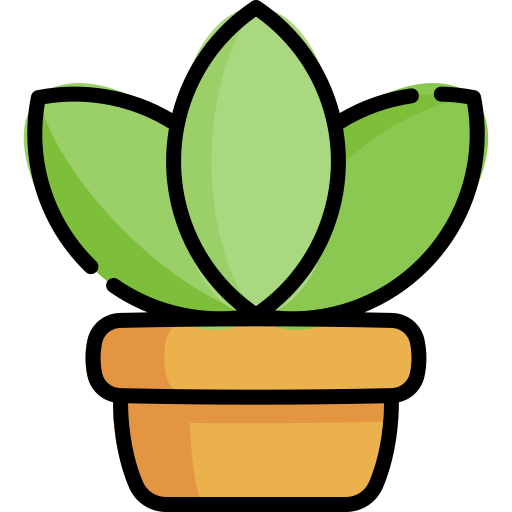
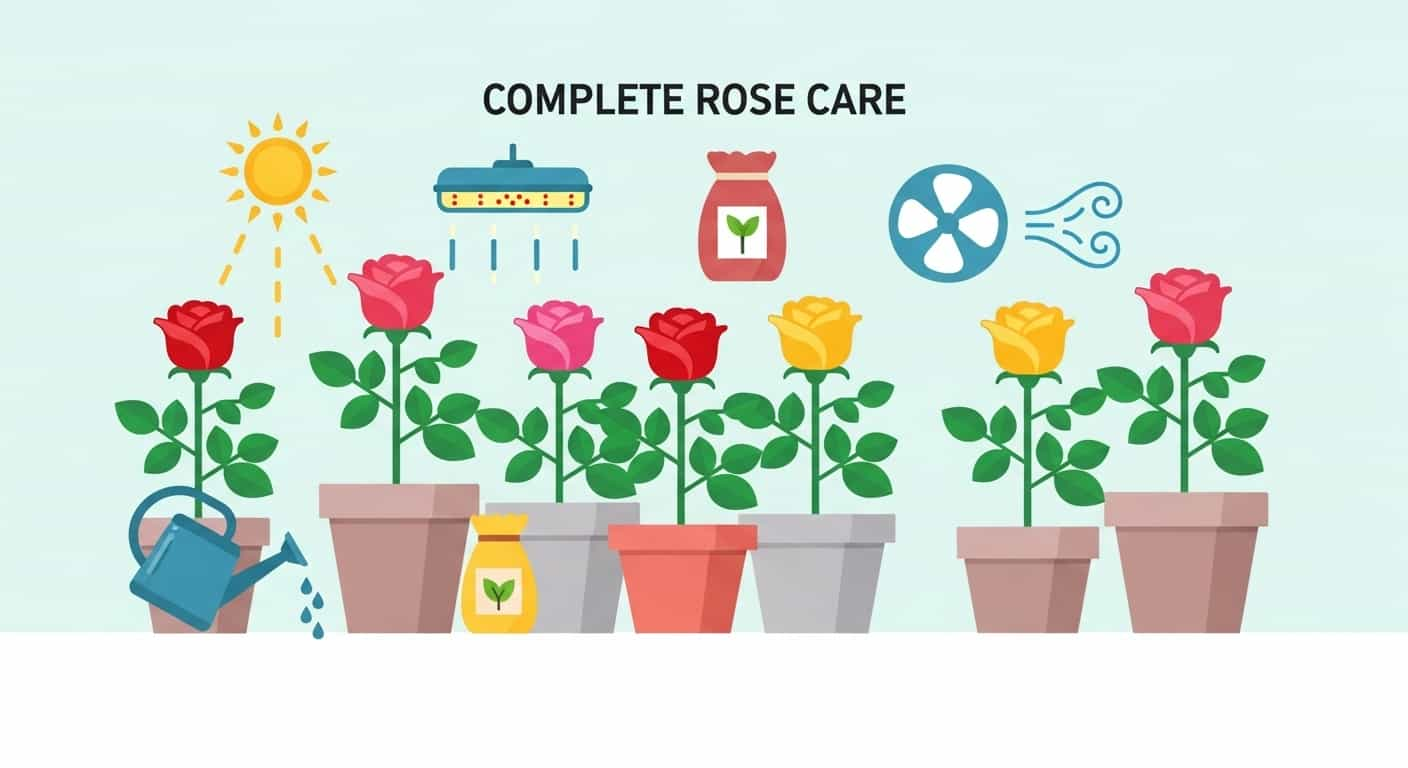
Leave a Reply